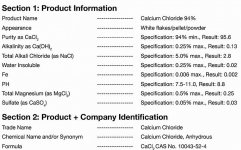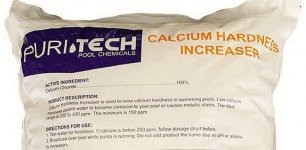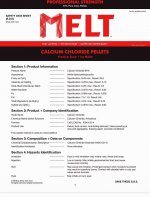I see on pool math there are two types of Calcium Chloride. One being Dihydrate and the other I assume is Anhydrous. Ive been looking around the internet and all I see is the Dihydrate type. Unless I'm wrong. The dosage amounts seem to line up with the Dihydrate dosage on poolmath at least. I havent found anything that matches the Anhydrous version. The closest thing I have found from the dosage amounts is this: http://www.poolsupplymall.com/pool-...ce-pak-300-calcium-hardness-increaser-15-lbs/ at 1LB per 10,000 gallons to raise CH 10ppm.
Ive seen that the Dihydrate type is 77-80% Calcium Chloride and the Anhydrous type is 90+%. That doesnt make sense since Leslies Hardness Plus MSDS shows 94-97% Calcium Chloride (http://www.lesliesmsds.com/Document/21/82/7a6b21b8-8fb3-444d-805d-b5f5030f1c83.pdf) and the dosage shows Dihydrate on poolmath.
How do you know which type you are getting?
Are there any brands of Anhydrous Calcium Chloride?
Ive seen that the Dihydrate type is 77-80% Calcium Chloride and the Anhydrous type is 90+%. That doesnt make sense since Leslies Hardness Plus MSDS shows 94-97% Calcium Chloride (http://www.lesliesmsds.com/Document/21/82/7a6b21b8-8fb3-444d-805d-b5f5030f1c83.pdf) and the dosage shows Dihydrate on poolmath.
How do you know which type you are getting?
Are there any brands of Anhydrous Calcium Chloride?




